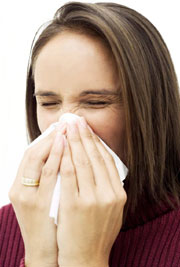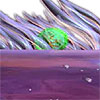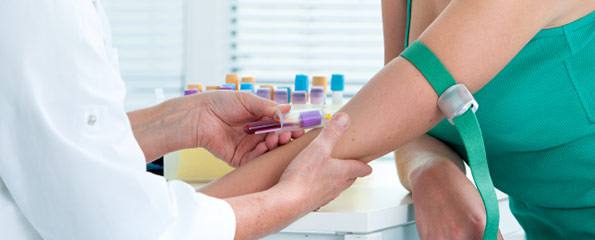- Introduction to the human immune system
- Different types of immunity
- Structure and organs of the immune system
Introduction to the human immune system
The human body is often described as being ‘at war’. By this, it is meant that the body is constantly under attack from things that are trying to do it harm. These include toxins, bacteria, fungi, parasites and viruses. All of these can, under the right conditions, cause damage and destruction to parts of the body and if these were left unchecked, the human body would not be able to function. It is the purpose of the immune system to act as the body’s own army, in defence against this constant stream of possible infections and toxins.
The human immune system is divided into two broad groups called the Acquired Immune System and the Innate Immune System. The details about these two systems and how they work is dealt with more under their specific pages. This page will deal more with the structures of the immune system, detailing the parts of the body that play a role in immunity. These include:
- The lymphatics
- Lymph nodes
- Thymus
- Spleen
Different types of immunity
The immune system is divided into two parts, called the Acquired Immune System and the Innate Immune System. While each of these plays a role in defending the body, there are major differences between the two.
The innate immune system is always working to protect the body and does not require any special preparation to stop infection.
The acquired immune system needs to be ‘primed’ before it can work to its full effectiveness though, and is only really effective after it has seen a possible infective agent before.
An overview of these different systems is given in the chart below, and for more details regarding the terminology used, refer to the specific pages linked above.
Get on top of your general health
Find and instantly book affordable GPs within Australia
Structure and organs of the immune system
The lymphatic system
The lymphatic system is almost equivalent to the blood vessels, only instead of carrying blood through the body, the lymphatic system carries a substance called ‘lymph’. Lymph is excess tissue fluid that has been drained from the body compartments. Lymphatic fluid is usually clear, watery, and has the same constitution as the blood, but without any cells. The lymphatic system is a complex network of lymphatic vessels (that carry the lymph), along which there are occasional lymph nodes. After the lymphatic system has collected all the lymph, this passes through the lymph nodes before being put back into the blood via a large vein just below the neck. In the lymphatic system there are lots of cells called lymphocytes (the T and B cells) that circulate around and are part of the acquired immune system.
Lymphoid tissue
Lymphoid tissue is scattered throughout the body and is home to the lymphocytes. Lymphocytes are packed into clusters in the walls of parts of the body that are often exposed to foreign substances. These sites include the gastrointestinal system as well as the tonsils which play a role in protecting the body from any air-borne infections.
Lymph nodes

The lymph enters from one side and slowly moves past all the cells of the lymph node before leaving through the other lymphatic vessel. This allows the lymph time to access as many of the lymphatic cells as possible. In the lymph node there is a dense packaging of immune cells such as macrophages. These are the ‘big eaters’ and will engulf and destroy anything dangerous that they can. They also play a role in showing these substances to the T and B cells (which is described in more detail under the Acquired Immune System). There are also areas of the lymph node called ‘germinal centres’ where all the b cells multiply to fight off infection. In another part of the lymph node, there are mostly T cells. When they need to, the lymphocytes leave the lymph node and enter the circulation to fight infection.
The lymph nodes are there as a filter for the lymph before it re-enters the venous system. 99% of all the foreign substances that arrive at the lymph node are removed. Lymph nodes are found in regions such as the base of the neck, the armpit and the groin. Swelling or inflammation of these nodes is usually in response to an infection in one of the areas that is drained by the lymph node. This is often what is meant when someone says that they have ‘swollen glands’.
Thymus
The thymus is a lymphoid organ located in the lower part of the neck and the front of the chest. With age, the thymus becomes smaller and loses most of its active immune cells. The outside of the thymus contains lymphoid stem cells (which are immature cells, still capable of growing) that divide rapidly, producing cells that mature into T cells. These T cells then migrate to the middle of the thymus. Detail of their growth is discussed under the Acquired Immune System. There are also cells in the thymus that release hormones (signalling chemicals) that cause T cells to grow.
Spleen
The spleen is the largest of the lymphoid organs. It is usually purple in colour, and located in the upper-left of the abdomen (the belly). The spleen is located behind the stomach, in front of the diaphragm (the muscle used for breathing), and next to the left kidney. The spleen can vary in size and shape dramatically; however, it is usually about 12cm long and 7cm wide (about the size of a clenched fist). The spleen contains large amounts of blood that is periodically pushes into the circulation by contraction of some tiny muscles that surround it.
There are two different ‘parts’ to the spleen, each with a different function. The ‘red pulp’ is named because of its colour and its role is to filter the blood. It does this by having tiny holes in its blood vessels that only allow some types of blood cells through. The blood cells that are a little older or in any way defective are not flexible enough to squeeze through these holes and so gets stuck. These stuck cells are then eaten by the macrophages.
The ‘white pulp’ is basically areas of lymphoid tissue in the middle of the spleen. There are areas filled with T cells and B cells. These make up about 5-20% of the spleen. There are lots more of the B cells in younger people than there are in older people, and their numbers in the spleen decrease with age.
More information
 |
For information on the acquired immune system, see Acquired Immune System. |
 |
For information on the innate immune system, see Innate Immune System. |
References
- Martini, FH. Human Anatomy (third edition). New Jersey, Prentice-Hall, 2000.
- Moore KL, Dalley AF. Clinically Oriented Anatomy (fourth edition). Baltimore, Lippincott Williams & Wilkins, 1999.
- Peakman M, Vergani D. Basic and Clinical Immunology. London, Churchill Livingstone (Elsevier), 2003.
- Young B, Heath JW. Wheater’s Functional Histology (fourth edition). Edinburgh, Churchill Livingston, 2002.
All content and media on the HealthEngine Blog is created and published online for informational purposes only. It is not intended to be a substitute for professional medical advice and should not be relied on as health or personal advice. Always seek the guidance of your doctor or other qualified health professional with any questions you may have regarding your health or a medical condition. Never disregard the advice of a medical professional, or delay in seeking it because of something you have read on this Website. If you think you may have a medical emergency, call your doctor, go to the nearest hospital emergency department, or call the emergency services immediately.







